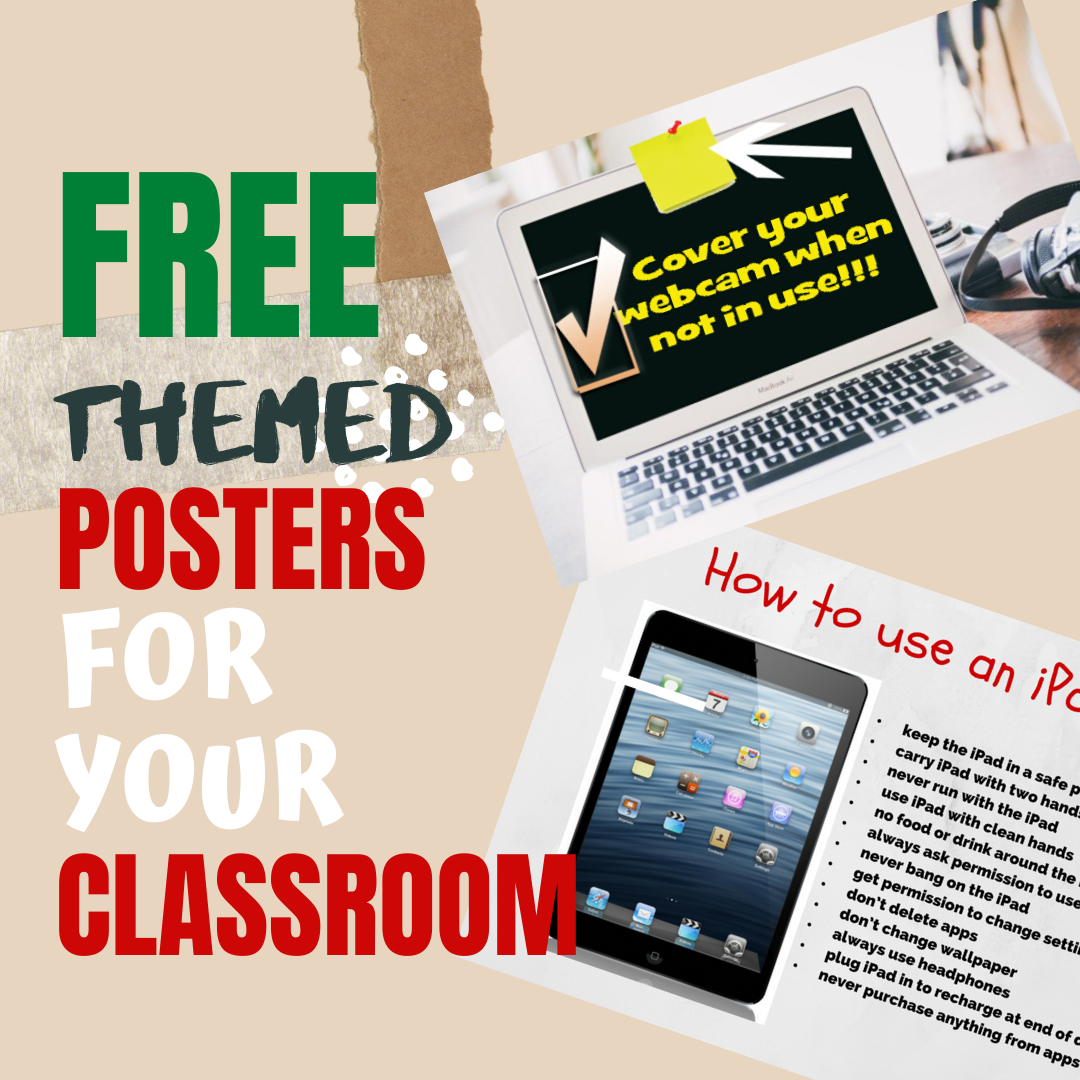As you prepare for the holiday break and then a new year, it’s a great time to think about resources available in your classes for students with special needs. Ask a Tech Teacher has a long list of online websites and apps for a variety of special needs, but if you’re looking for a good overview of general tips, check these out:
Tips for Supporting Students With Special Needs Using Technology
You might not realize that over 60% of students with special needs benefit remarkably from technology-integrated learning environments. To effectively support these students, you can start by understanding each student’s unique challenges and strengths. Have you considered how assistive technologies like text-to-speech can be tailored to individual needs? By engaging students in selecting personalized tools, you empower them to take charge of their learning journey. Parental involvement and open communication also play vital roles. But how do you guarantee these strategies lead to meaningful progress? There’s a lot more to explore in optimizing these approaches.
Understand Individual Needs
Understanding the unique needs of each student with special needs is the first step in effectively using technology to support their learning. You should start by getting to know each student’s specific challenges and strengths. Whether it’s a learning disability, physical impairment, or sensory issue, recognizing these elements will guide you in selecting the right technological tools.
It’s important to communicate with students, parents, and specialists to gather detailed information about their needs.
Next, consider conducting assessments to pinpoint areas where technology could make the most impact. You might notice that a student struggles with reading, making text-to-speech software a game-changer. Similarly, for students who’ve difficulty with fine motor skills, touchscreens or adaptive keyboards can be incredibly beneficial.
Don’t forget to involve the students in this process. Their feedback on what works and what doesn’t is invaluable. Engaging them in decision-making won’t only empower them but also increase the likelihood that they’ll embrace the technology.

Leverage Assistive Technology
When it comes to leveraging assistive technology, you can truly transform the educational experience for students with special needs. By incorporating tools designed to support their unique challenges, you empower them to access learning more independently and effectively.
Start by exploring a range of assistive technologies that cater to different needs, such as text-to-speech software for students with reading difficulties or speech-to-text for those with writing challenges.
Consider how screen readers can open up digital content for visually impaired students or how hearing aids and FM systems enhance auditory access in the classroom for those with hearing impairments.
It’s crucial to stay informed about the latest developments in assistive technology, as this field is continuously evolving with new innovations.
Ensure that the technology you choose fits seamlessly into the student’s learning environment. Collaborate with special education professionals to tailor these tools to individual learning goals.
Don’t forget to provide training for both students and educators, ensuring everyone can use the technology confidently.
With the right approach, assistive technology not only levels the playing field but also enriches the learning experience, paving the way for greater educational success.
Implement Personalized Learning Tools
Personalized learning tools are revolutionizing the way educators support students with special needs by catering to their unique learning styles and preferences. These tools let you adapt lessons to fit each student’s strengths and areas for improvement, making learning more engaging and effective.
By using technology like adaptive learning software, you can tailor educational experiences that match a student’s pace and interests, fostering an environment where everyone can thrive.
Start by identifying each student’s specific needs and preferences. Use assessment tools to gather data on their learning styles. This information helps you select the right personalized learning tools.
For instance, some students may benefit from visual aids and interactive lessons, while others might excel with auditory resources or gamified learning experiences. Choose tools that align with these insights to create a more inclusive classroom.
Regularly review the effectiveness of the personalized tools you’re using. Stay open to adjustments based on student feedback and performance data.
Utilize Interactive Learning Platforms
Building on the foundation of personalized learning tools, interactive learning platforms offer another dynamic way to support students with special needs. These platforms engage students through multimedia content, providing a rich, multisensory experience.
You’ll find that they’re perfect for tailoring education to individual needs by allowing students to work at their own pace and explore subjects in depth.
Interactive platforms like accredited online schools K-12 often include features that cater to diverse learning styles, such as visual, auditory, and kinesthetic. They can transform a standard lesson into a more engaging experience, keeping students motivated and involved.
Here are some key benefits:
- Increased Engagement: The use of videos, animations, and interactive elements can capture the attention of students who might struggle with traditional learning methods.
- Immediate Feedback: Many platforms provide instant feedback, helping students understand their mistakes and learn from them in real-time.
- Accessibility Features: Tools like text-to-speech, adjustable text sizes, and color contrast options make content accessible to all learners.
Foster Collaborative Learning
While technology in education often focuses on individual learning, fostering collaborative learning is equally essential for students with special needs. Collaborative learning nurtures social skills, builds confidence, and enhances problem-solving abilities. By integrating technology, you can create opportunities for students to work together, regardless of their physical location or learning challenges.
Start by using digital tools like video conferencing platforms, which allow students to connect and interact in real-time. These platforms can facilitate group discussions, project collaborations, and peer-to-peer learning.
Encourage the use of shared documents and online whiteboards, where students can brainstorm and contribute ideas simultaneously. This promotes a sense of ownership and shared purpose among participants.
Incorporate digital storytelling and group projects using multimedia tools. These resources enable students to express their creativity and work together to produce something meaningful.
Make sure to use apps that are accessible and provide adaptive features, ensuring all students can participate fully.
Encourage Parental Involvement
As you leverage technology to foster collaborative learning among students with special needs, it’s equally important to bring parents into the educational journey. Encouraging parental involvement can enhance learning outcomes and provide a support system that extends beyond the classroom. Technology offers various ways to facilitate this connection, creating a more inclusive environment.
First, consider using digital communication tools to maintain open lines with parents. Platforms like email or messaging apps can provide timely updates and share resources. This keeps parents informed and involved in their child’s progress.
- Virtual Meetings: Conduct regular video calls or webinars to discuss progress, address concerns, and collaboratively set goals.
- Online Portals: Use educational platforms that allow parents to access assignments, grades, and feedback, ensuring they’re part of the learning process.
- Shared Resources: Offer digital resources like tutorials or guides that parents can use to support their child’s learning at home.
Monitor Progress and Adapt
Tracking student progress effectively can make a significant difference in the educational experience of students with special needs. By using technology tools, you can monitor their progress in real time and adjust teaching strategies as needed.
Start with digital platforms that offer analytics and reporting features. They help you identify areas where a student excels or struggles, allowing you to tailor your approach accordingly.
Regularly review the data these tools provide. Look for patterns in student performance and engagement. Is there a particular subject or activity where they consistently do well, or one where they face challenges?
This information will guide you in adapting lesson plans and instructional methods to better meet their needs.
Don’t forget to involve the students in this process. Share their progress with them in a way they understand, and celebrate their achievements.
Encourage them to reflect on what strategies work best for them.
Conclusion
You’ve explored various ways to support students with special needs using technology, but here’s the ultimate question: are you ready to transform their educational journey? By understanding individual needs, leveraging assistive technology, and fostering personalized learning, you hold the key to releasing their potential. Will you seize this opportunity to empower them, engage parents, and adapt continuously? The path forward is in your hands—embrace it, and watch as you help shape a future where every student thrives.
–image credit (where not noted) Deposit Photo
Here’s the sign-up link if the image above doesn’t work:
https://forms.aweber.com/form/07/1910174607.htm
“The content presented in this blog are the result of creative imagination and not intended for use, reproduction, or incorporation into any artificial intelligence training or machine learning systems without prior written consent from the author.”
Jacqui Murray has been teaching K-18 technology for 30 years. She is the editor/author of over a hundred tech ed resources including a K-12 technology curriculum, K-8 keyboard curriculum, K-8 Digital Citizenship curriculum. She is an adjunct professor in tech ed, Master Teacher, webmaster for four blogs, freelance journalist on tech ed topics, contributor to NEA Today, and author of the tech thrillers, To Hunt a Sub and Twenty-four Days. You can find her resources at Structured Learning.









































